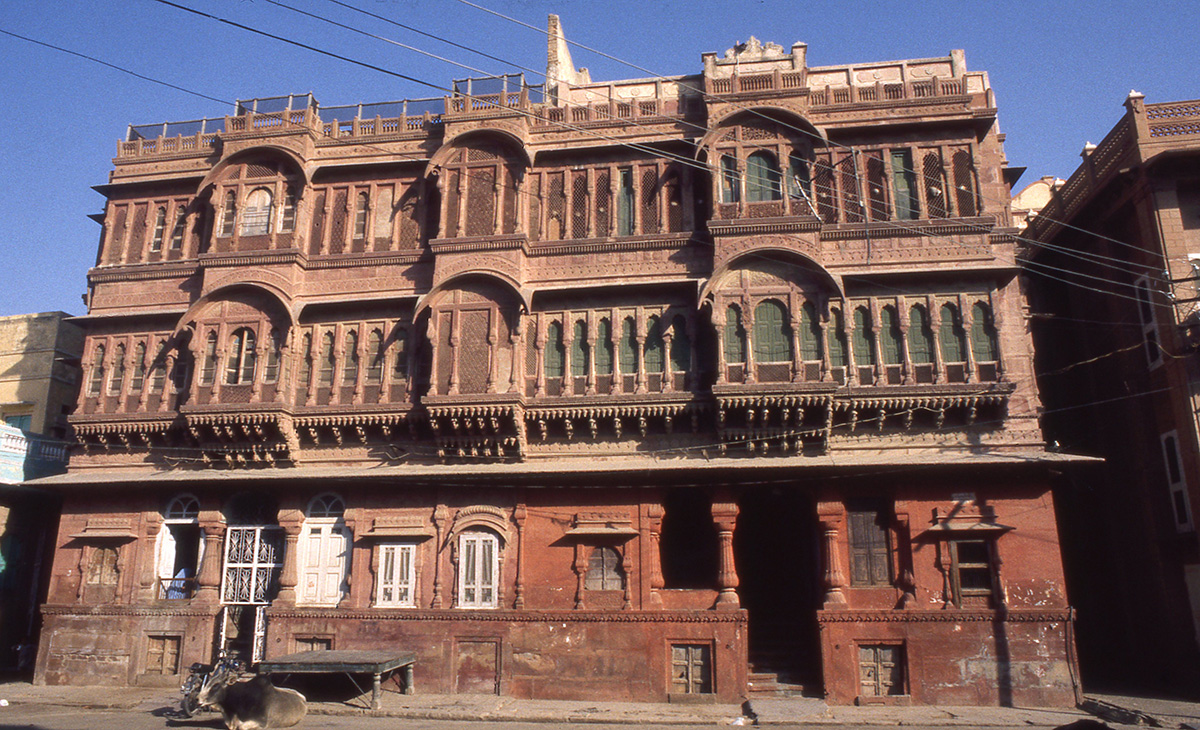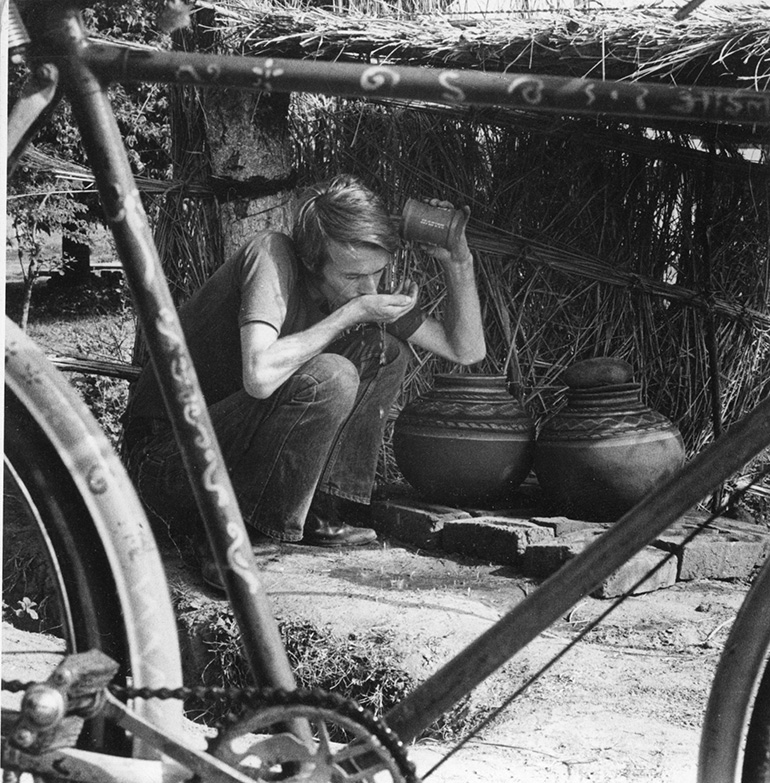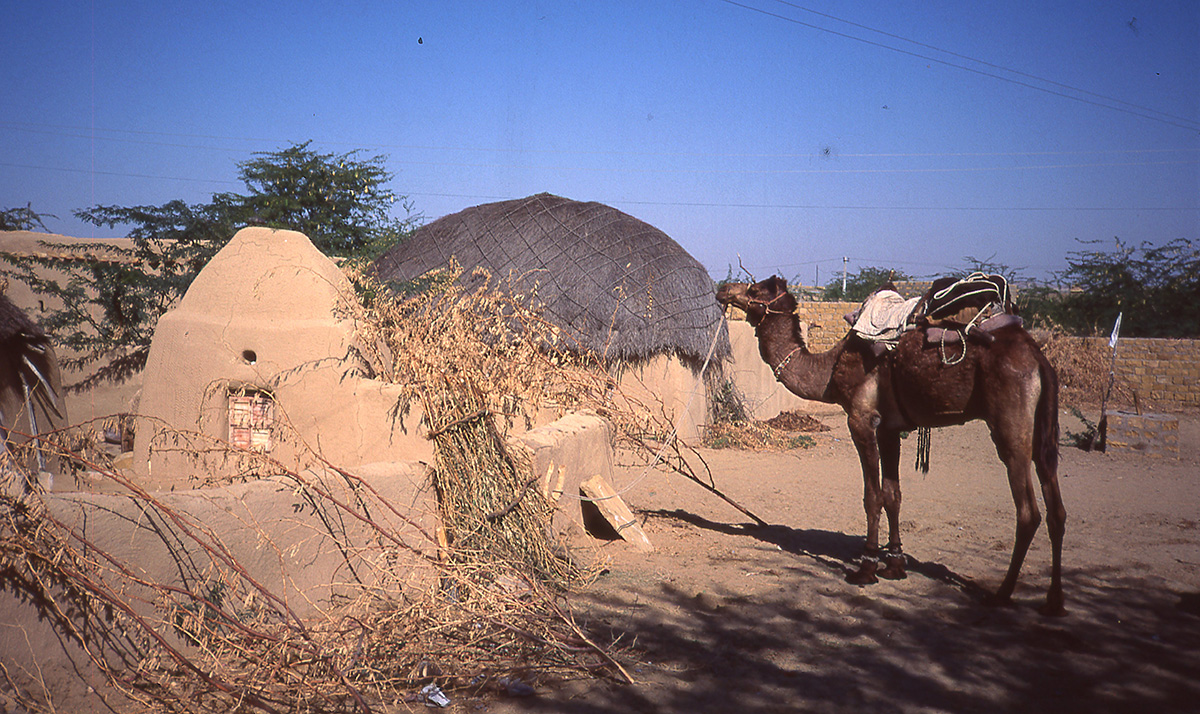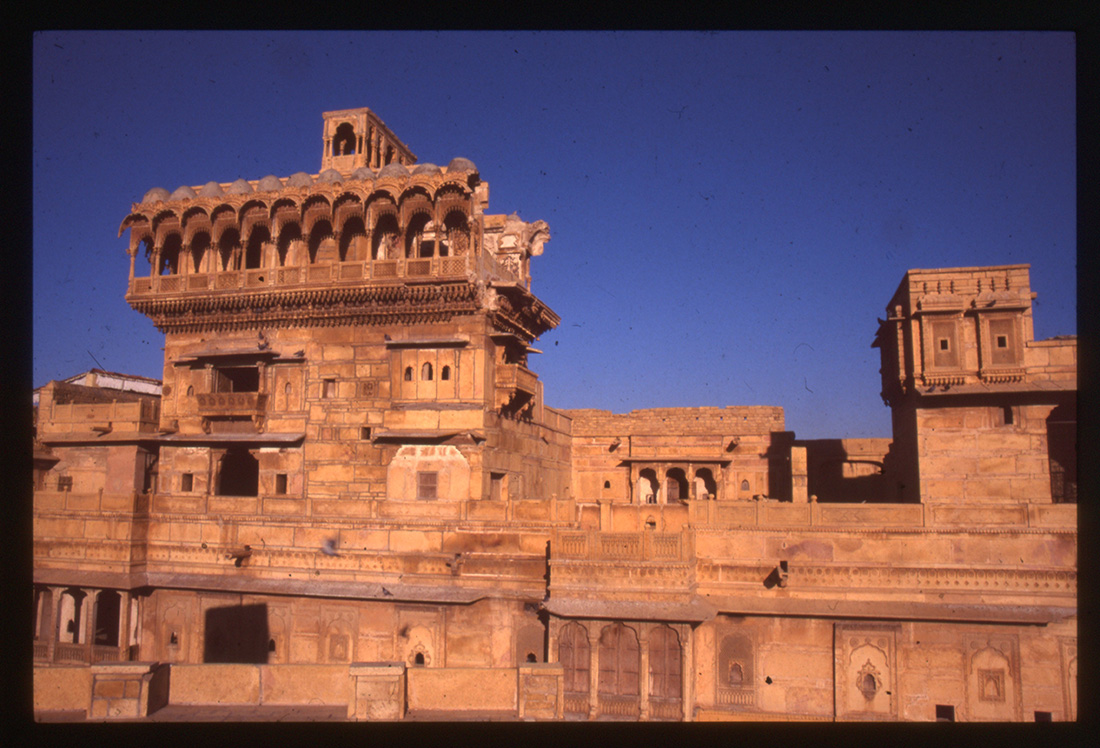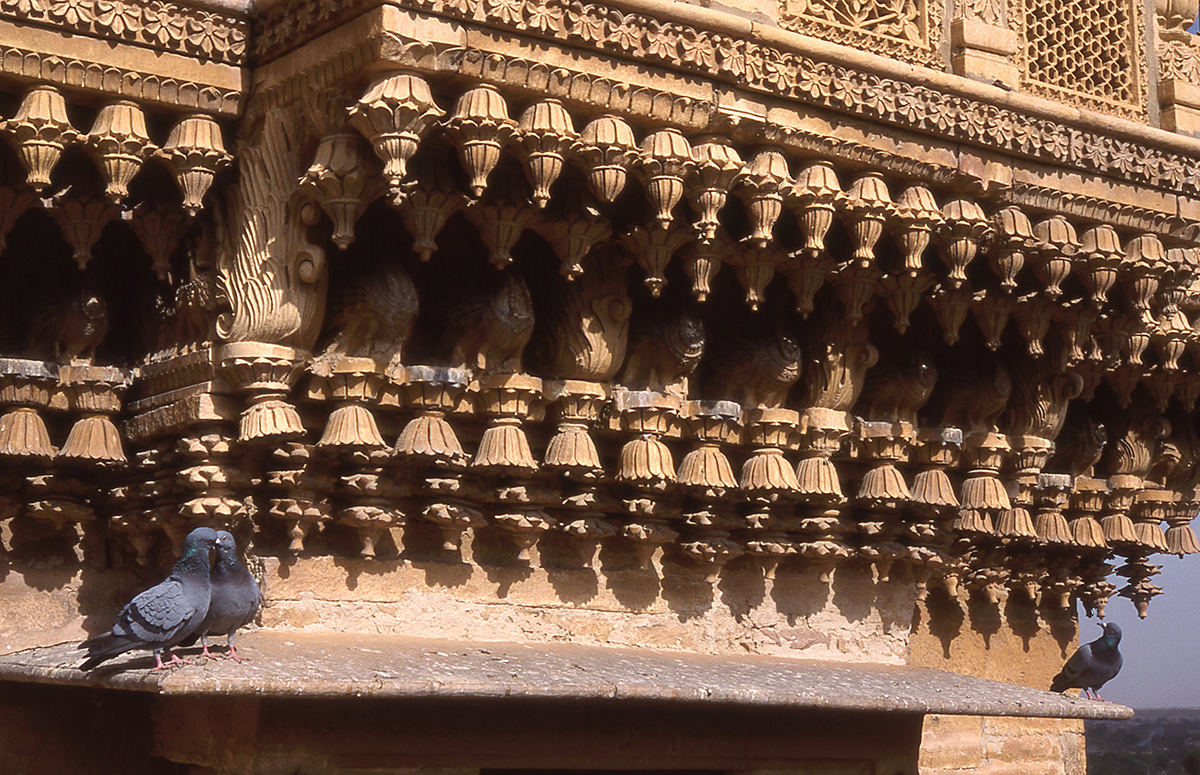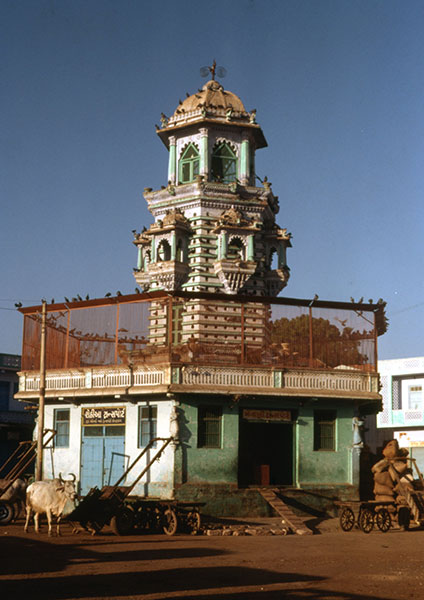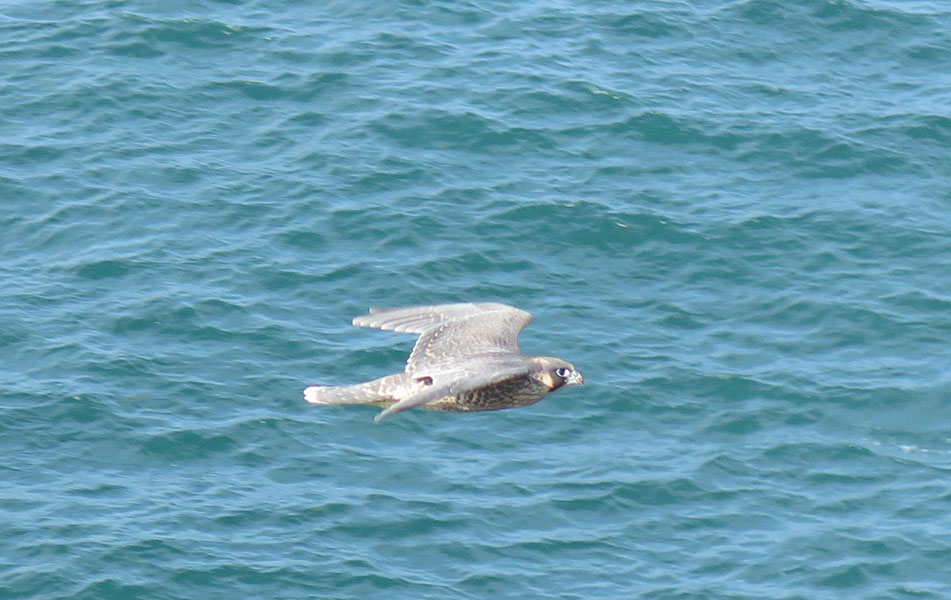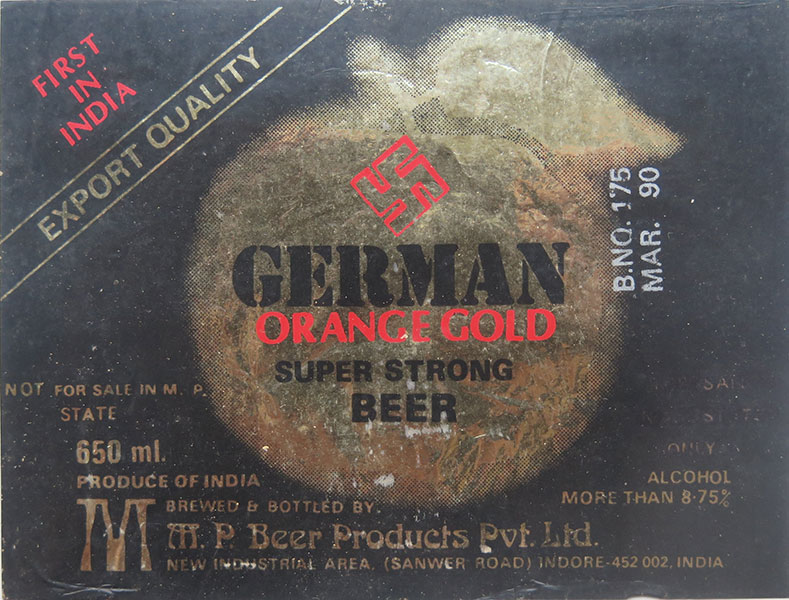59. Biking Deeper Into Rajasthan
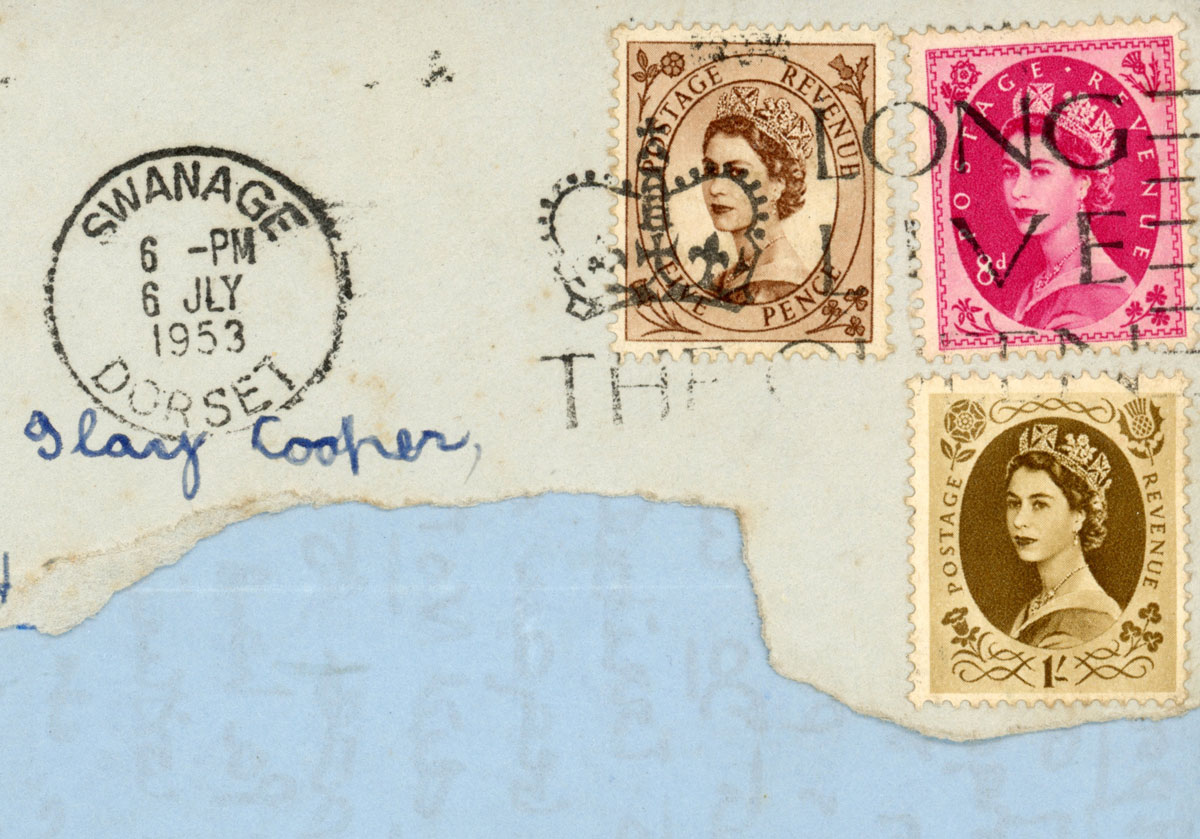
58. A Long Reign
February 10, 202260. The Lion And The Lamb
April 7, 2022M y first blog covered the beginning of a ride across north India on a secondhand basic cycle in 1972, leading to the painted buildings that would absorbed much of the future. It ended in painted Sardarshahr but I pedalled onwards: a further 3000 km remained.
I left Sardarshahr with a heavy head after an evening trying to outdrink a soldier on local hooch. Little main roads, straight, surfaced and empty, dictated the route. On either side rough, sandy tracks, impassable for the bike, faded into little villages. In a flat landscape the few hills, even for that gearless bike, presented no challenge. I never had to walk. After Europe, the absence of traffic was sinister. Often there was no motor vehicle in ten or twenty kilometres (India had abandoned miles). Distant camels stacked high with twiggy branches, appearing like walking trees, provided a frequent hazard. Looking back over their shoulder, they drifted across my path. Other camels pulled carts bearing brightly-clad families towards some local celebration. Their pneumatic tyres were a post-Independence development to confront sandy tracks.
Advancing into the desert villages of circular adobe huts, beautiful in texture as in colour, became ever rarer. Each dwelling bore a conical roof of dry elephant grass or twigs. Women built and decorated their walls from a mixture of mud and cattle dung, fashioning remarkable shapes. To reduce the summer heat, walls might be divided or pierced by molded round or oval holes calling to mind the sculpture of Moore or Hepworth. Each larger village supported a tiny roadside tea house, halt for timeless buses.
A whole day’s ride separated towns, the road passing between ranks of wonderfully wind-shaped dunes, their curves patterned with ripples or perfectly smooth. Vegetation, well-adapted to aridity and supporting the occasional flock of goats, became sparser. Apart from vibrant village peafowl, birds favoured drab colours – wheatears, larks or partridge merging well with the background. The commonest road kill was a vulture too occupied with a delicious corpse. Flattened on the tarmac by some unexpected truck, it would resemble an imperial eagle.
At Dungargarh, next night-halt, a cell in the dharamshala, a basic inn funded by a local philanthropist, cost 50 paise (2 ½ pence). After the previous towns, I sought murals. The walls were bare and, leaving, I was 25km short of Bikaner, the next city, when an empty lorry pulled up. Its Sikh driver put the bike in the back and dropped me in the town centre. We would meet again.
Much of the five days passed there was with people generous with their hospitality. An impressive the fort enclosed the Maharaja’s palace but the temples were uninspiring and its zoo sad, a prison for innocent beasts. The town had its charm; in the commercial quarter evening sun enhanced the red stonework of merchant havelis built of intricately carved sandstone. Each façade, balcony and supporting brackets was finely worked with abstract patterns and flowers. Windows curtained by pierced stone screens maintained internal privacy while providing a view out.
I met up with three young men, one a musician in a nearby temple, who introduced the city. One evening including an all-night ceremony where the congregation sang popular film songs along with devotional ones. When the priest persuaded me sing, the women pulled their veils across to disguise their mirth at weird occidental tunes. He demanded the Lord’s Prayer, for which I had to invent a melody. In the early hours, spiced tea and cigarettes were handed around while the musicians sang a song mocking folk who came to the temple only for its free tea.
I left them southwards, covering fifty km towards the holy village of Kolayat. It lay in a depression a short way off the road, its sanctity enhanced, in that arid landscape, by large pool surrounded by trees, flowers and small shrines. As with many holy places, pilgrims offered an extra attraction, gathering at dawn to descend steps to the water’s edge to bathe. Among them were sadhus, trident in hand, in shades of saffron. A little bazaar prospered on remotely pious mementos.
Next morning, with a strong wind, I covered over 100 km to Bap, passing a man bearing an ancient musket with a very long barrel and a beautifully-shaped inlaid wooden butt. The only place to sleep was on the floor adjoining a tea house amongst travelling villagers before leaving for another unremarkable settlement, Pokhran. It was fated for fame when, the following year, India’s first nuclear test took place nearby. Less remarkably, I replaced a worn pedal there and a local family put me up. As I left a couple of smart, scarlet-turbaned young men with doubtful diamond ear-studs, hearing I had 120 km to ride, offered a black pill. ‘This will get you there!’. ‘What is it?’ ‘Afeem – very good.’
They were right. Hardly noticing the milestones pass, I arrived in Jaisalmer, a town of intricate mansions carved from golden sandstone around a hilltop fortress. Their pill worked. I asked ‘What is afeem’? They answered ‘Opium’. There was only one little guest house – ‘Gaylord’. Today Jaisalmer is a thriving tourist destination.
Christmas came. Day-late English-language newspapers had America blitzing North Vietnam, hitting India’s Embassy, killing General Giap (fake news: he would die in bed aged 102). Ukraine is nothing new. Bullying politically incorrect, weaker lands was Cold War policy. Rajaji, once Governor General, whom I hoped to meet in Madras, had died at 94. A Christmas dinner of fried egg and chips was interrupted by the arrival of an English couple. She taught my sister at college and he had served at the army camp where my father worked. Small world!

